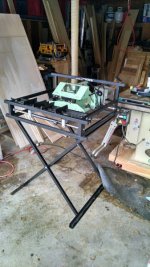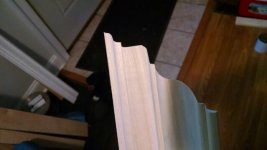promark747
Member
- Joined
- Jan 9, 2010
- Messages
- 501
I am going to install crown in a small powder room, and have a question regarding the layout of the corners. Since I am coping the inside corners, would the first installed piece have butt cuts on both ends? This would seem to indicate that as I go around the room, the fourth wall will require coped cuts on both ends. In other words, here would be the four walls:
Butt-Butt
Cope-Butt
Cope-Butt
Cope-Cope
Alternatively, I guess I could first do Butt-Butt on two opposing walls, and then fit Cope-Cope on the other two. What is the typical method for laying out a simple room like this when coping?
Thanks
Butt-Butt
Cope-Butt
Cope-Butt
Cope-Cope
Alternatively, I guess I could first do Butt-Butt on two opposing walls, and then fit Cope-Cope on the other two. What is the typical method for laying out a simple room like this when coping?
Thanks



